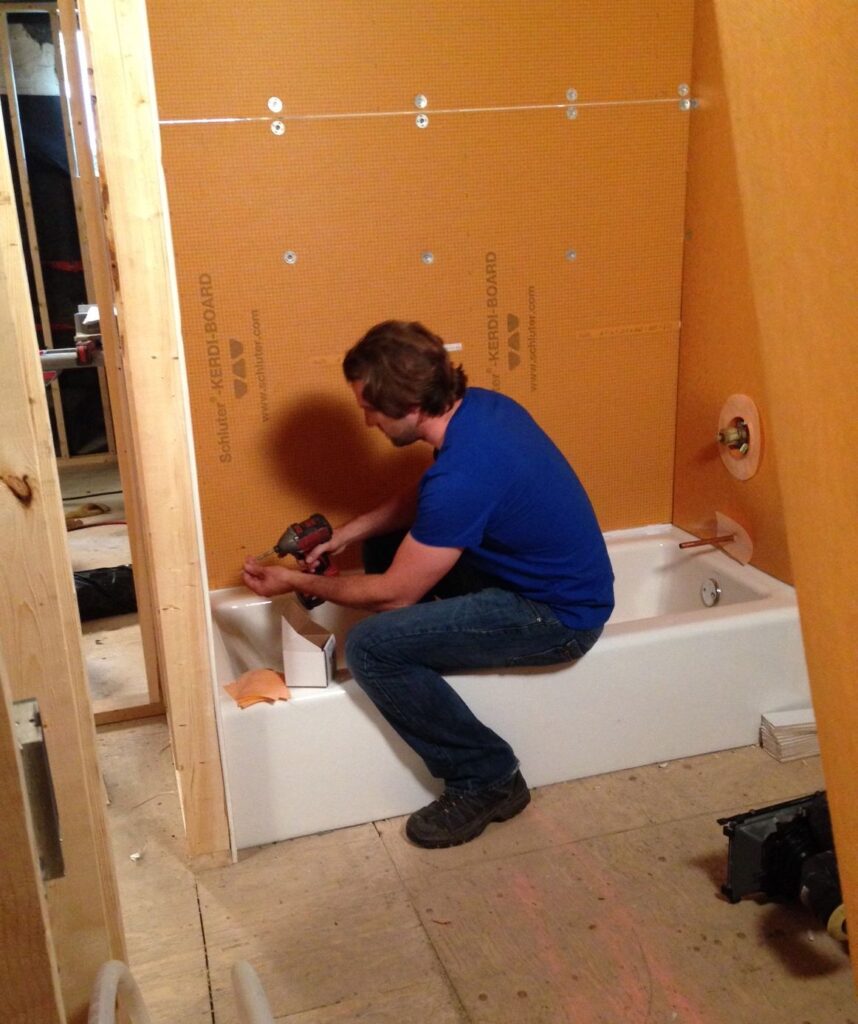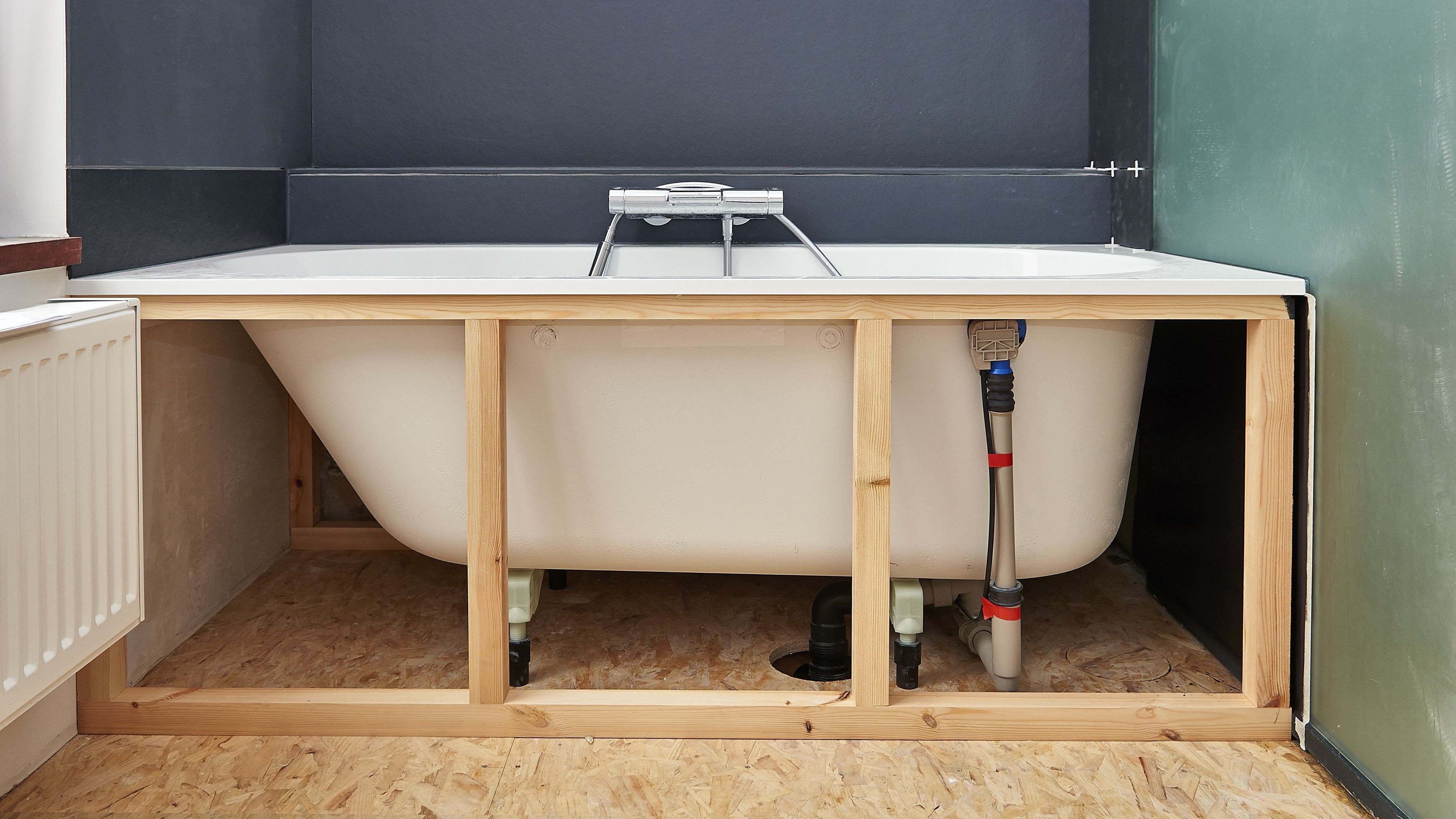Every person will have their own unique theory involving Installing A Bathtub.

Mounting a bath tub isn't exactly rocket science, however it does call for strong plumbing, carpentry, and also often, tiling abilities. Replacing an old bathtub with a new one is likewise a reasonably difficult project. If the old tub is easily easily accessible, the job can relocate speedily; if you have to open a wall surface to get rid of the old bathtub and also place the brand-new bathtub, the job is much harder. In either case, the task is within a residence handyman's skills, although you will require an assistant to move out the old tub and set in the new one. Ensure you have qualified yourself for the task as well as fit trying it. Rather than hiring a contractor to take over a halfway-completed project, it is better to think about utilizing one before you begin. Possibilities are you may require a professional plumber to make tube connections.
This article will help you install a brand-new bath tub in your bathroom if you have currently purchased a new tub and don't require to transform the setup of your previous water supply pipelines.
Your devices as well as material list need to consist of the following:
Preparing for the Installation
To start with, the supporting structure provided with the bath ought to be fitted (if required) according to the manufacturer's guidelines. Next off, fit the taps or mixer to the bathtub. When suitable the faucet block, it is essential to make sure that if the tap comes with a plastic washer, it is fitted in between the bath and the taps. On a plastic bathroom, it is likewise practical to fit a sustaining plate under the taps unit to stop strain on the bath tub.
Fit the versatile tap ports to the bottom of the two faucets utilizing 2 nuts and olives (often supplied with the bathtub). Fit the plug-hole outlet by smearing mastic filler round the sink electrical outlet hole, and afterwards pass the electrical outlet through the hole in the bathroom. Utilize the nut supplied by the supplier to fit the plug-hole. Take a look at the plug-hole outlet for an inlet on the side for the overflow pipeline.
Next, fit completion of the versatile overflow pipe to the overflow outlet. Afterwards, screw the pipe to the overflow face which need to be fitted inside the bath. See to it you utilize every one of the supplied washing machines.
Connect the catch to the bottom of the waste electrical outlet on the tub by winding the thread of the waste electrical outlet with silicone mastic or PTFE tape, and screw on the catch to the electrical outlet. Connect all-time low of the overflow tube in a comparable manner.The bath need to now prepare to be suited its final setting.
Removing Old Taps
If you require to change old taps with brand-new ones as a part of your installment, then the first thing you ought to do is separate the water. After doing so, turn on the taps to drain pipes any water staying in the system. The process of eliminating the existing faucets can be quite troublesome because of the limited access that is typically the situation.
Make use of a container wrench (crowsfoot spanner) or a tap tool to reverse the nut that connects the supply pipes to the taps. Have a cloth prepared for the continuing to be water that will come from the pipes. As soon as the supply pipes have been eliminated, make use of the very same tool to loosen up the nut that holds the faucets onto the bath/basin. You will need to quit the single taps from turning throughout this procedure. Once the taps have been eliminated, the holes in the bath/basin will certainly have to be cleaned of any type of old securing compound.
Before proceeding to fit the brand-new faucets, compare the pipe connections on the old taps to the brand-new faucets. If the old faucets are longer than the new taps, then a shank adapter is required for the new faucets to fit.
Installing the Bathtub
Using the two wooden boards under its feet, place the bathtub in the required setting. The wood boards are useful in evenly spreading the weight of the tub over the area of the boards rather than concentrating all the weight onto 4 tiny points.
The following objective is to ensure that the bathtub is leveled all round. This can be attained by examining the level and also readjusting the feet on the bath tub until the level reviews degree.
To mount faucets, fit the bottom of the furthest versatile tap port to the suitable supply pipe by making a compression join; then do the same for the various other faucet.
Activate the water system and check all joints and brand-new pipework for leakages as well as tighten them if needed. Fill up the bathtub and additionally examine the overflow electrical outlet as well as the typical outlet for leaks.
Ultimately, take care of the bath paneling as described in the supplier's user's manual. Tiling and also securing around the tub ought to wait until the bath tub has been used at least when as this will certainly resolve it right into its final setting.
Fitting New Taps
If the tails of the brand-new faucets are plastic, after that you will need a plastic connector to stop damages to the string. One end of the port fits on the plastic tail of the tap and the various other end supplies a link to the existent supply pipes.
If you require to fit a monobloc, then you will certainly need decreasing couplers, which attaches the 10mm pipeline of the monobloc to the basic 15mm supply pipe.
Next, position the faucet in the placing opening in the bath/basin making sure that the washers are in place between the faucet and also the sink. Safeguard the tap in place with the manufacturer provided backnut. As soon as the faucet is securely in position, the supply pipelines can be connected to the tails of the faucets. The faucets can either be linked by using corrugated copper piping or with normal faucet connectors. The previous kind ought to be attached to the tap ends initially, tightening just by hand. The supply pipelines can later be attached to the other end. Tighten up both ends with a spanner after both ends have been connected.
Tiling Around the Bath tub
In the location where the bath satisfies the tile, it is necessary to seal the joins with a silicone rubber caulking. This is essential as the fitting can relocate enough to crack an inflexible seal, triggering the water to penetrate the wall surface in between the bath and also the tiling, causing problems with wetness as well as possible leakages to the ceiling below.
You can choose from a selection of coloured sealants to assimilate your fixtures and also installations. They are sold in tubes and also cartridges, and can sealing gaps as much as a width of 3mm (1/8 inch). If you have a bigger gap to fill up, you can fill it with spins of soaked paper or soft rope. Remember to constantly fill the tub with water before securing, to allow for the activity experienced when the tub remains in use. The sealant can fracture relatively very early if you do not consider this activity before securing.
Alternatively, ceramic coving or quadrant floor tiles can be utilized to border the bath or shower tray. Plastic strips of coving, which are easy to use and also cut to dimension, are also quickly readily available on the market. It is suggested to fit the ceramic tiles making use of water-resistant or water-proof adhesive as well as cement.
Bathtub Installation
How Important Is A Bathtub To Your Home?
High-quality baths, showers, and other bathroom updates are necessary when considering a smart investment in your home. It’s a room that you go to every day and one that is constantly being used by guests.The bathroom is one of the top trafficked rooms in a home and also one of the most valuable in terms of home resale.
Install Piping Before Tub
You will be using your existing drain and waste vent system, but pipes required include the hot and cold water supply lines and a pipe leading to a shower head. A mixing valve and shower head are also needed. Air chambers may be required.
Position the Tub
Lower the tub into place so that the continuous flange fits against the wall studs and rests on 1’x4' or 2’x4' supports. Anchor the tub to the enclosure with nails or screws inserted through the flanges into the studs.
NOTE: Remember, bathtubs and shower stalls may require support framing. A bathtub filled with water is extremely heavy, so check building codes and framing support before installing the tub.
Assemble Drain Connections
Assemble the bathtub drain connections by connecting the tub overflow with the tub drain above the trap, not beyond it. The trap will have a compression fitting that screws over the arm of the overflow assembly.
Place a Pipe For the Shower Head
First, locate a brass female threaded winged fitting and attach it to a framing support via a screw or a nail. Then run a pipe up the wall for the shower head. Sweat or solder the other side of the brass fitting to the top of the pipe.
Attaching Hot and Cold Water Lines
Attach your water lines for both hot and cold by sweating these directly into the hot and cold ports of the mixing valve. The mixing valve will be how water enters the tub’s system, not by the pipes themselves.
Install the Spout
Extend a piece of 1/2 inch pipe, or whichever length is specified in the manufacturer’s instructions, for the tub spout. Sweat on a male threaded fitting at the end of the pipe or use a brass nipple of the proper length and a 1/2 inch cap.
NOTE: At this point you should have your rough-in plumbing work inspected before proceeding further.
Check For Leaks
Restore the water pressure and check the drain connection and the supply pipes for any sign of leaking.
estore the Bathroom Wall
Replace the wall with moisture-resistant drywall as a base for your wall covering. Seal the joints between the wall and your new tub with silicone caulk as protection against water seepage.
https://www.berkeys.com/2016/12/02/bathtub-installation-dallas/

I discovered that content about How to Install a Bathtub Yourself while doing a lookup on the web. I beg you set aside a second to promote this blog entry if you enjoyed reading it. Kudos for your time. Visit us again soon.
Book Inspection